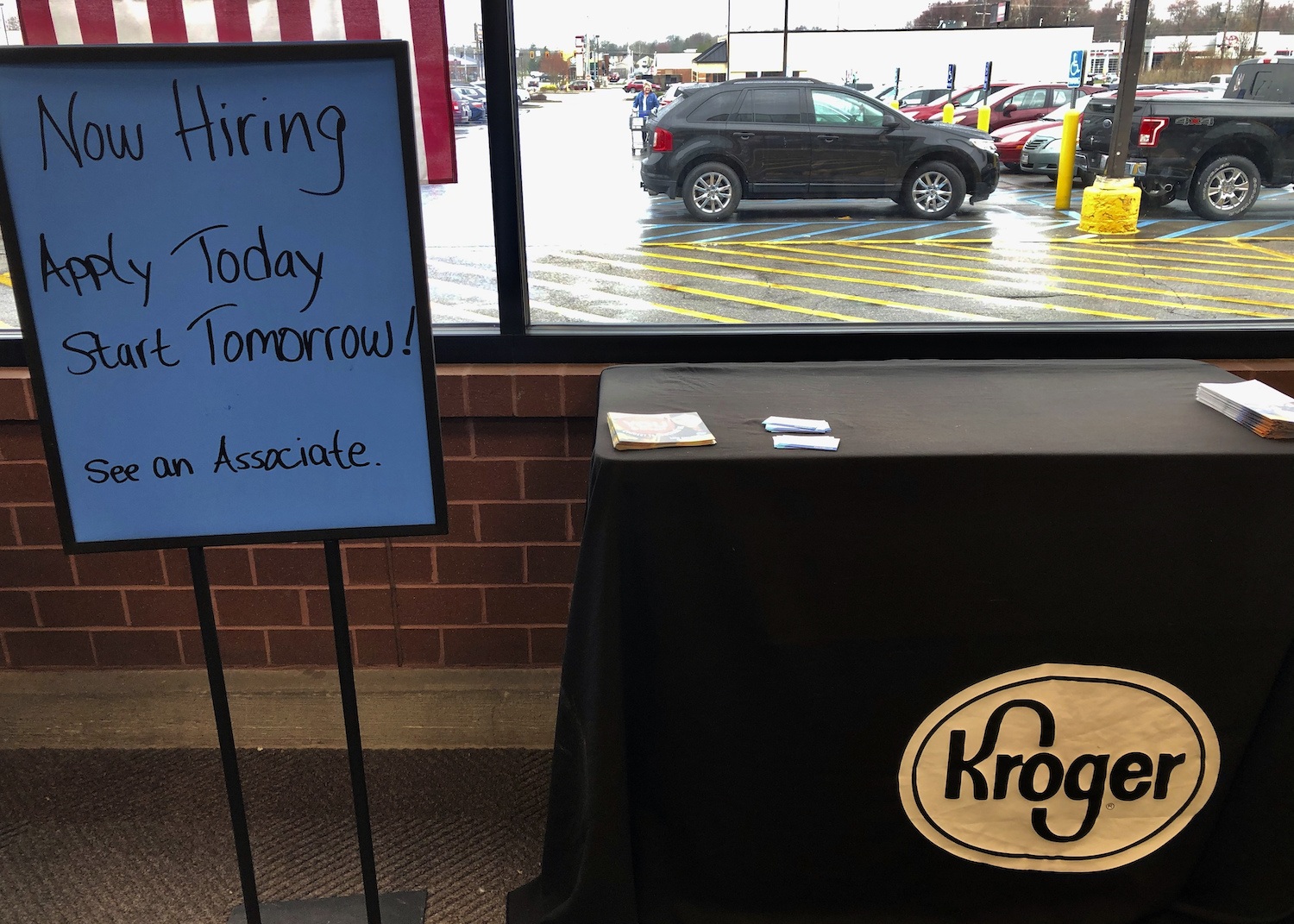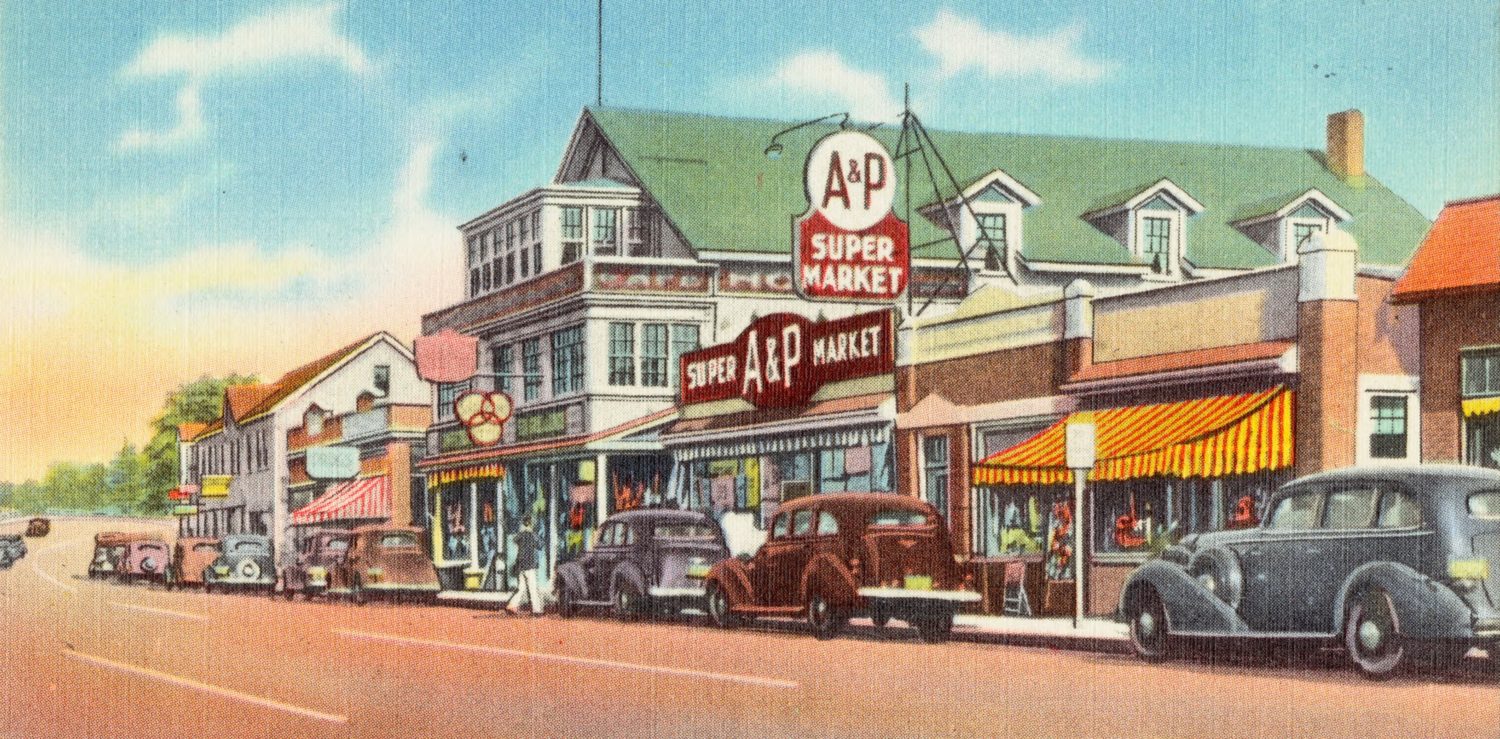Walmart, Kroger, and other grocery chains are adding thousands of workers.
America’s service sector has been silenced. Across the country, authorities have ordered all non-essential businesses to close, and customers to remain home, in an effort to stop the spread of Covid-19. The effect has been swift and devastating. Last week, on a conference call with reporters, D. Taylor, president of the country’s largest hospitality union, UNITE HERE, said 90 percent of 300,000 workers, mainly in hotels, casinos, restaurants, and airports, were idle.
“Our industry has been devastated by this current crisis,” he said. “We have vast numbers of workers in the hospitality industry across America that are losing jobs, potentially losing health care, have food insecurity, housing insecurity, and still don’t generally have sick leave available to them.”
The good news, if there is any, is that layoffs are not gutting every industry. As bars and restaurants shutter, grocery stores and supermarkets remain open. And they’re on hiring sprees to accommodate demand—in some cases, targeting those same hospitality workers, now out of jobs.
Retailers are hiring not just to meet the surge in demand, but also because stronger labor protections may be stretching them thin.
Last week, Walmart said it planned to hire 150,000 new workers for jobs in stores and warehouses. America’s largest grocer also said it would give full-time employees $300 bonuses, and part-time employees $150 bonuses, next month. Amid an influx of online orders and deliveries, Amazon announced it would hire 100,000 people to work in fulfillment centers and Whole Foods stores. A company spokesman told Marketwatch most hires would stay on through April.
Kroger—the parent company of Ralphs, Harris Teeter, Fred Meyer and King Soopers supermarkets—is hiring 10,000 new employees across grocery stores, manufacturing plants, and distribution centers. The stores, which need cashiers, clerks, and pharmacy technicians, will also dole out Walmart-sized bonuses. Albertsons, a rival grocer, is looking to hire 2,000 delivery drivers and workers in Washington, and another 2,000 in California, for its stores, which include Safeway. A spokeswoman for Acme, another chain owned by the company, said it could be looking to hire as many as 4,100 workers in its East Coast supermarkets.
Miguel Gomez, a Cornell economist who specializes in supply chains, said these retailers are hiring not just to meet the surge in demand, but also because stronger labor protections may be stretching them thin. Walmart and Kroger, for instance, both announced their massive hires days after granting two-week sick leave policies for victims of the virus—which, given the expected contagion rates, could comprise huge swaths of their existing workforce.
“There is a natural demand for workers that are losing their jobs in the food service sector.”
Fortunately, there’s a significant pool of unemployed hospitality workers who can benefit from the openings. Walmart, Dollar General and Pepsi, among others, are recruiting from shuttered hotels and restaurants. CVS plans to hire 50,000 clerks, drivers, warehouse workers, and other store employees laid off from the Hilton and Marriott hotel chains, among others. Sedano’s, a Florida supermarket chain, has hired 400 workers laid off from two local restaurant chains, putting them to work as cashiers, stock clerks, prepared-foods cooks and janitors. Giant Eagle is hiring unemployed arena workers and restaurant employees.
“There is a natural demand for workers that are losing their jobs in the food service sector,” Gomez said. “You can’t just get anybody. You need some training, and employees who have worked in restaurants are more familiar with food safety procedures, and the way to handle food in general.”
But safety is a concern far beyond food itself. In recognition of the sudden and very real danger grocery work presents for employees, grocers of all sizes, from Daily Table to Kroger and Safeway, have raised wages by $2 an hour. Trader Joe’s will follow suit, as petitioners are saying the unsafe conditions call for hazard pay. Plus, cashiers contacted by The Counter report plenty of extra shifts and overtime.
Food-service infrastructure is also getting converted to grocery use, as distributors with excess products and unused trucks and warehouses are partnering with grocers and retailers.
But labor unions argue the new wages and hours aren’t enough to counteract the risk of being on the frontlines of a pandemic. Grocery stores are one of the few places left to congregate, and in some instances, stockers, clerks, and cashiers have been designated emergency workers.
Jonathan Williams, a spokesman for United Food and Commercial Workers (UFCW) Local 400, which represents around 35,000 workers, primarily in grocery stores, from Washington, D.C. to Tennessee, said those working conditions can be unsafe. Stores are packed with panicked shoppers, which means cashiers are more likely to come into contact with a carrier of the virus. The union is asking Kroger, Safeway, Giant Food and Shoppers to provide hand sanitizer and gloves, and set in-store customer quotas to ensure social distancing.
“It’s our position that any safety equipment necessary to protect our members should be provided by the employer,” Williams said. “Nothing’s off the table for us. We want to ensure folks are safe. But it is a rapidly developing situation, and we’re learning as we go.”
Many food-service workers, who have been trained in safe handling techniques, could be valuable in various grocery operations.
The union has also asked grocers to ramp up paid sick leave to a minimum of two weeks during the national emergency. In the event that an employee contracts the virus, the union says, recuperation or self-quarantine will be longer than their accrued personal time off, which begins at three days a year for its members. So far, most of the employers have not obliged, but on Saturday, under public pressure, Kroger announced that its employees would qualify for two weeks of paid sick leave if they experienced symptoms or placed themselves in self-isolation.
Lisa Harris, a cashier at a Kroger store in Richmond, Virginia, described chaos in her store as it awaits new hires. Bread, milk, and batteries are flying off shelves, in high-pressure conditions that she said remind her of the panic before a snow day. Given the virtual impossibility of maintaining a safe distance from customers, Harris said she expects to contract the virus.
“With people buying in bulk the way that they have, unless you have someone standing at that shelf all day, and putting things up all day, that shelf is going to be empty,” she said.
Food-service infrastructure is also getting converted to grocery use, as distributors with excess products and unused trucks and warehouses are partnering with grocers and retailers. A spokeswoman for the Food Industry Association, the trade group spearheading the effort, told The Counter that around 100 distributors are participating. Even Sysco, one of America’s largest food-service providers, has been brought to its knees, and is pivoting to grocery.
Experts say that makes sense, and that many food-service workers, who have been trained in safe handling techniques, could be valuable in various grocery operations. But the shift is also symbolic. Since at least 2015, Americans have spent more money on food outside their homes, at restaurants and cafeterias, than they have on groceries. The pandemic is beginning to shift the balance.



